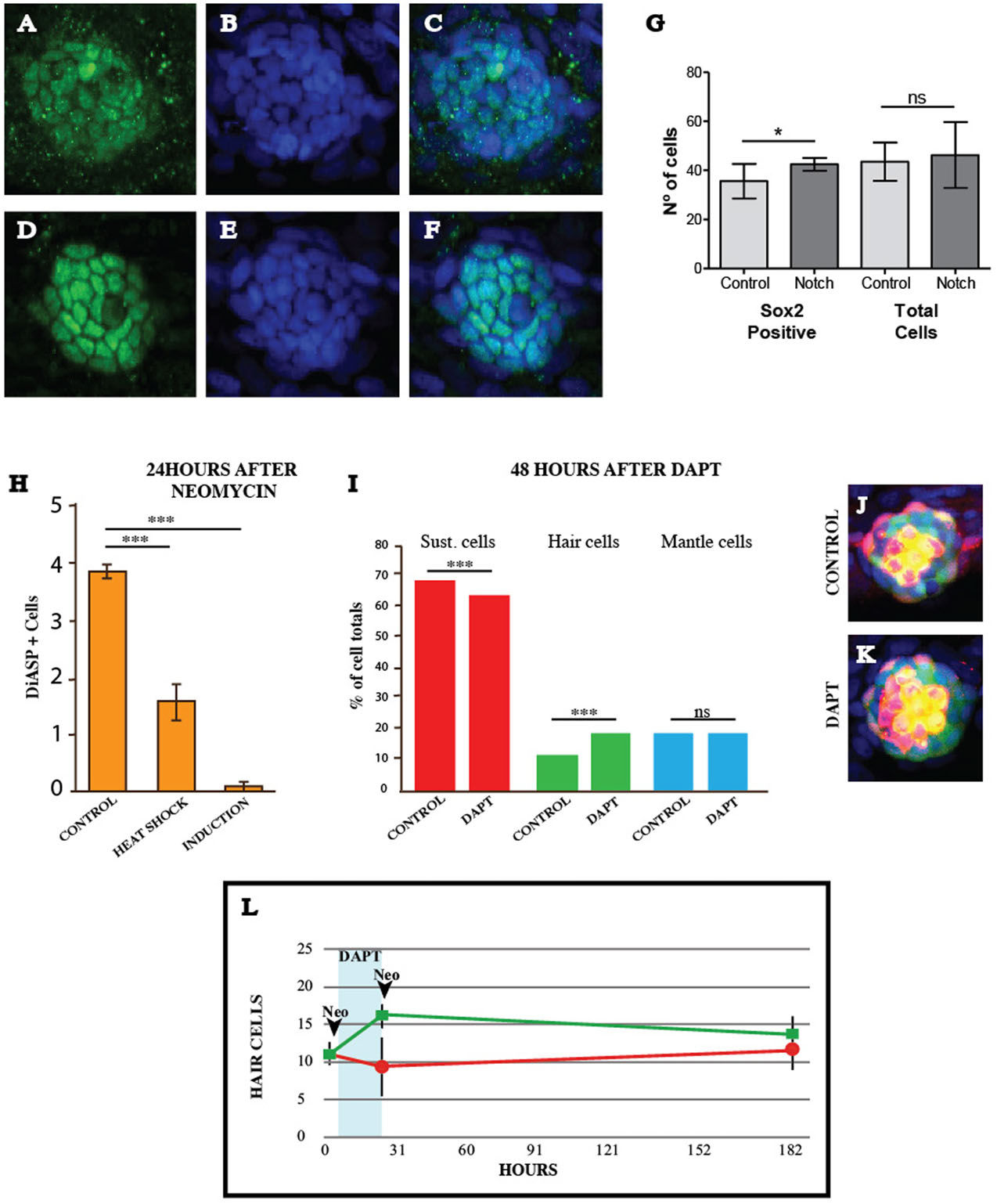Fig. 4
Neuromast organization after recurrent damage. (A-F) A neuromast immunostained for Sox-2 (red) and labeled with DAPI (blue) in (A-C) controls and (D-F) after induction of constitutive Notch signaling. (G) Quantification of Sox-2 positive cells and total cells number in regenerating neuromast 24h after neomycin treatment with and without induction of NICD in the double transgenic line Tg[Cldnb:Gal4ERT2;5xUAS-E1b:6xMYC-notch1a], results are mean±s.e.m. (Mann-Whitney test U=110, Control N=16 (3 larvae) and NIND=23 (4 larvae), *P=0.03). (H) Quantification of regenerated hair cells 24hpt after constitutive Notch activation by heat shock and chemical induction, results are mean±s.e.m. (Control versus Heat shock Mann-Whitney U=7.5, P<0.0001. Control versus Induction Mann-Whitney U=0, P<0.0001. Control N=33 (8 larvae), Heat shock N=7 (1 larvae), Induction N=14 (3 larvae) (I) Quantification of sustentacular, hair and mantle cells in regenerating neuromasts after two consecutive neomycin treatments, intercalated with a DAPT incubation period, results are mean±s.e.m. [Sust. cells Mann-Whitney U=61.5, P=0.0052. Hair cells Mann-Whitney U=34.5, P<0.0001. Mantle cells Mann-Whitney U=135, P=0.8081. Control N=22 (4 larvae), DAPT N=15 (3 larvae)]. (J-K) Representative neuromasts of the triple transgenic line Tg[ET(krt4:EGFP)sqgw57A ; Alpl:mCherry ; pou4f3: Kusabira-CAAX] used for quantifications. (L) Graph with hair-cell counts in regenerating neuromasts of Tg[ET(krt4:EGFP)sqet4] fish during 7days, showing controls (red) and DAPT-treated fish (green). DAPT incubation period is indicated by the blue vertical bar. Results are mean±s.d. Time points: 0h N=4 neuromasts (4 animals), 24h N=5 neuromasts (5 animals), 182h N=9 neuromasts (9 animals).

